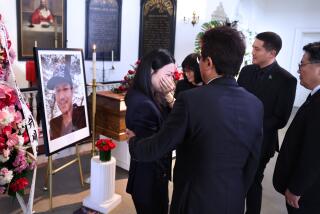How a Korean American found healing by retracing the first Korean immigrants’ ocean voyage
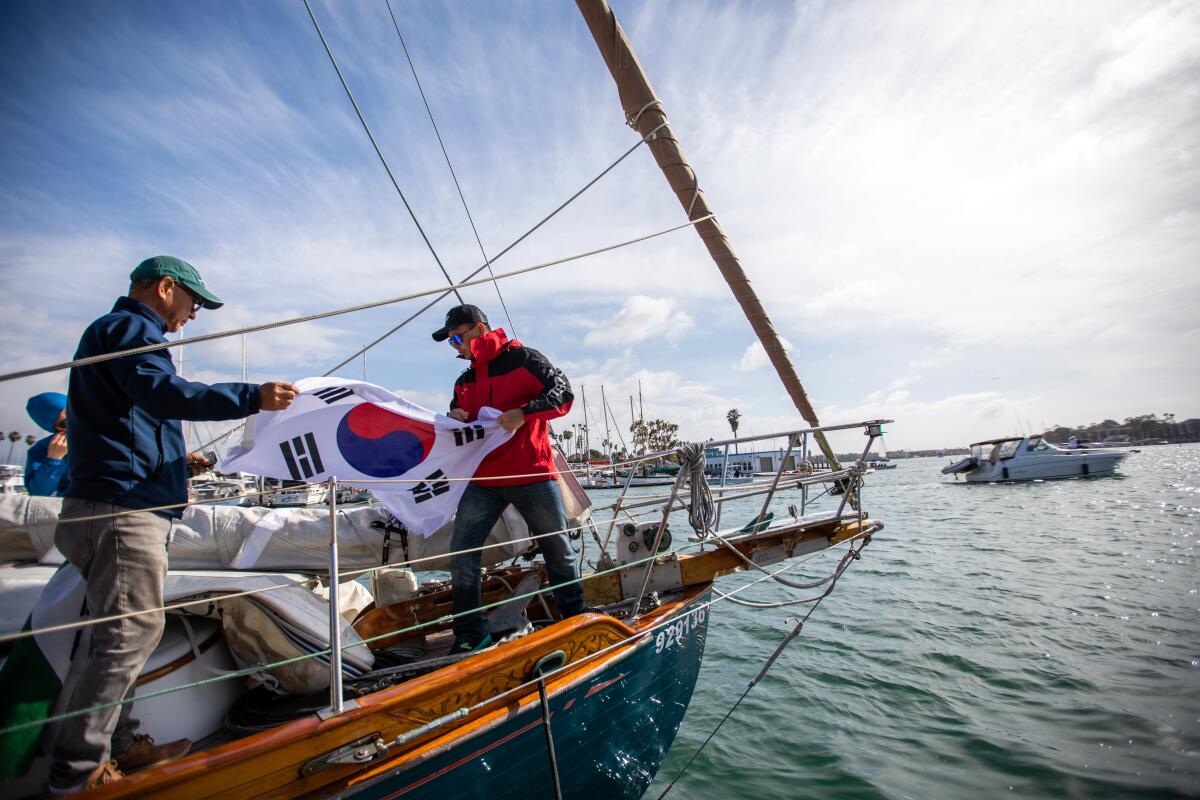
- Share via
In the sailing yacht’s cramped living area, nearly 20 sticky notes reminded Jin Woo Nam and his crew of the tasks ahead — buffing and waxing, applying a special paint to prevent barnacles from sticking, fixing a leaky water heater.
Nam, 63, didn’t seem stressed. On this day in early February, he smiled as he strode among a dizzying array of ropes and sails to repair the antennas for the boat’s tracking system.
Since he bought the Ignatella in 2011, selling his home to buy the used 37-foot craft, Nam has dreamed of sailing to Korea, his birthplace.
He had achieved a modest prosperity as the owner of a cafe and karaoke bar, among other businesses. But to him, the American dream felt hollow. There had to be more to it than that.
And so, he was preparing for a journey across the Pacific, about 75 days at sea from Marina del Rey to Honolulu to Incheon, retracing in reverse the journey of the first Korean immigrants 120 years ago.
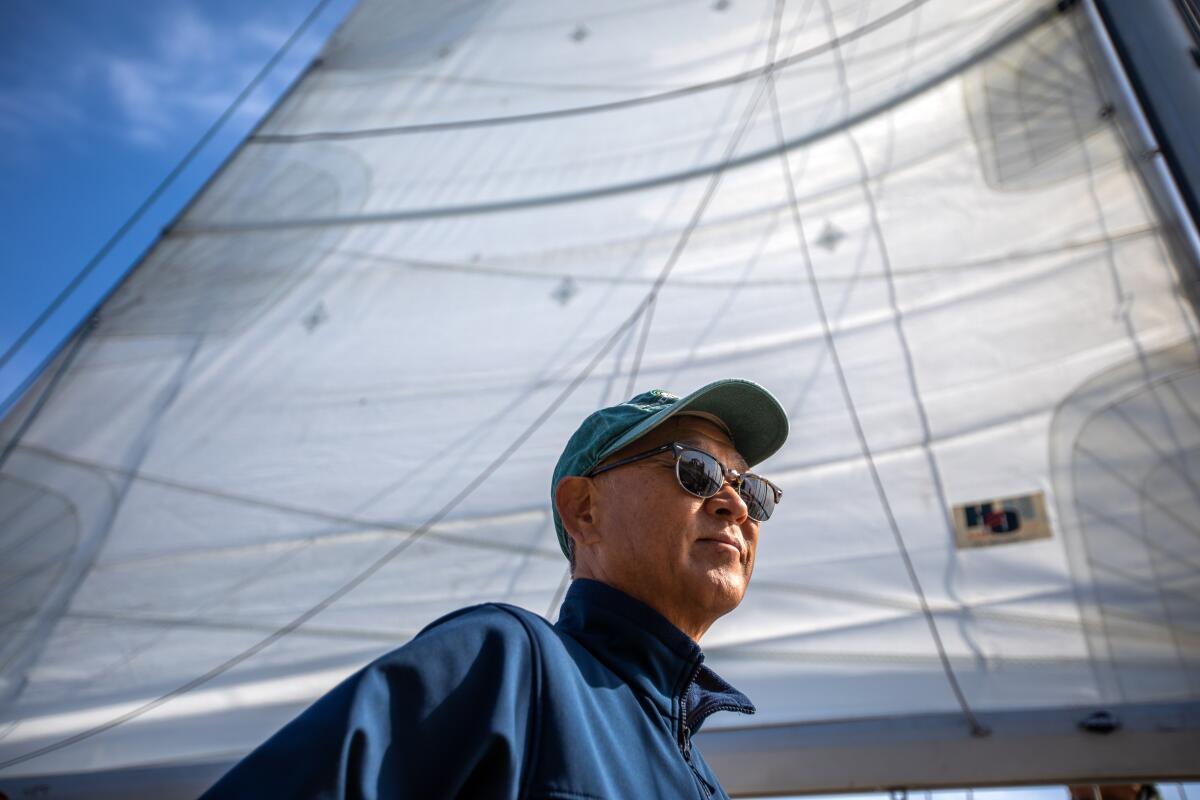
After decades in the U.S., Nam needed to travel home — not by boarding a plane but the hard way, like a salmon swimming upstream.
“We only know how to earn money, not how to spend it. We get sick and die. That feels so futile,” Nam said. “It’s so foolish. We worked so hard, so we have the right to play hard and enjoy our lives.”
On Jan. 13, 1903, 102 Koreans — 56 men, 21 women and 25 children — aboard the RMS Gaelic landed in Hawaii, a U.S. territory at the time.
They were promised a mild climate, free schooling and work at $15 a month, with free lodging and medical care.
“There was a promise of a dream,” said UC Riverside professor Edward Taehan Chang.
Instead, they were scattered to sugar plantations, forced to do backbreaking work for at least three years to pay off their debts. Supervisors on horseback whipped them if they so much as paused to stretch, Chang said.
Nam, too, came to the U.S. in search of a better life. In 1979, after graduating from high school in Korea, he settled in Orange County, painting buildings and cleaning carpets. He eventually opened the cafe in Garden Grove and the karaoke bar in Hawaiian Gardens.
He bought a house in Placentia and worked at an investment brokerage. But achieving those outward markers of success wore him down. He had once dreamed of being a painter or an architect.
In his late 30s, he enrolled at the Laguna College of Art and Design, studying painting.
After getting his degree, he made a career shift, teaching painting and running a gallery.
As a child in the seaside town of Busan, Nam fell in love with the ocean. In California, he took up fishing. Trying to economize for his trips, he stumbled into crafting wooden kayaks. That led to sailing.
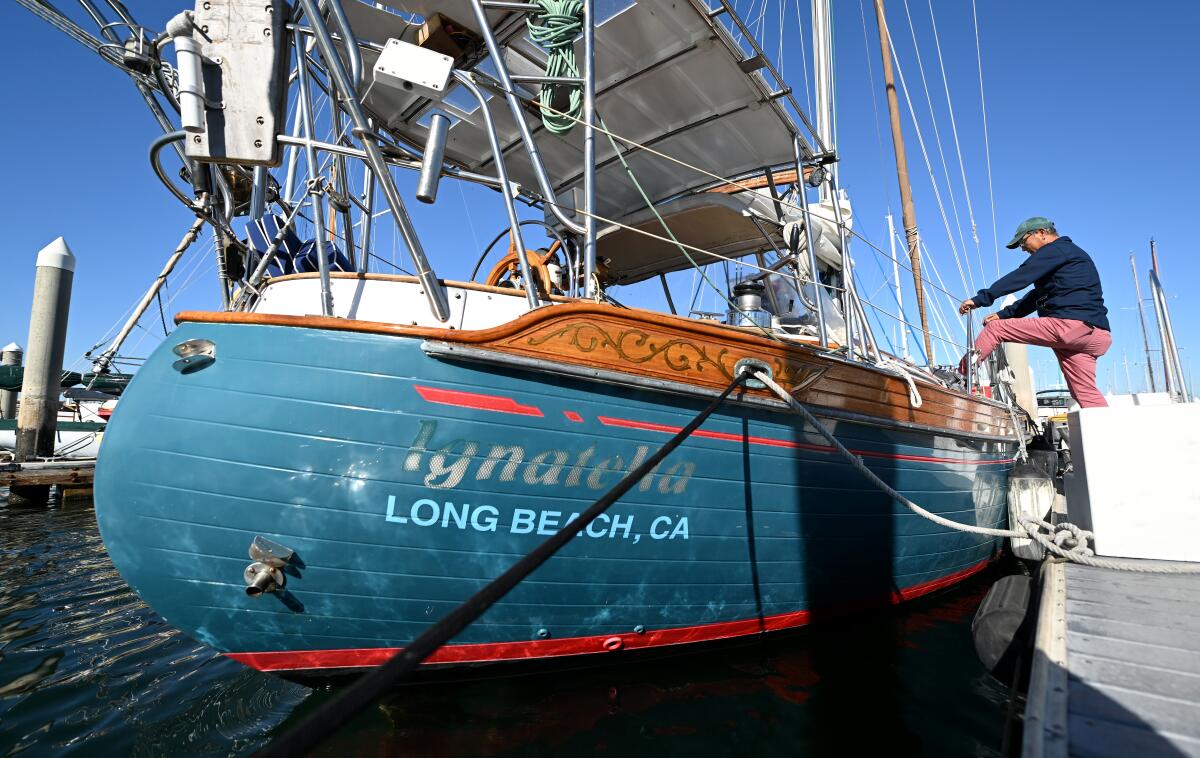
He sold his house for about $300,000 and bought a sailing yacht for $90,000, naming it the Ignatella — a combination of his Catholic name, Ignacio, and his wife’s name, Stella — and painting it Atlantic blue.
“I had talked about buying the yacht for years,” Nam said. “So even though my wife didn’t like it very much, she understood where I was coming from.”
Nam learned how to tie knots and dock his boat in strong winds, how to adjust the sail depending on the wind and the waves.
Sailing yachts are slow, with a maximum speed of less than 10 miles an hour. They can’t power straight through headwinds, instead zigging and zagging across the water. But that’s how Nam, who now works as a professional sailing captain, wants to live his life.
“When we’re driving on a road, there are certain rules. You need to keep to your lane, and you face trouble if you veer outside,” Nam said. “There are certain lanes in the ocean, but when you’re sailing, you’re making your own road ... There’s that freedom.”
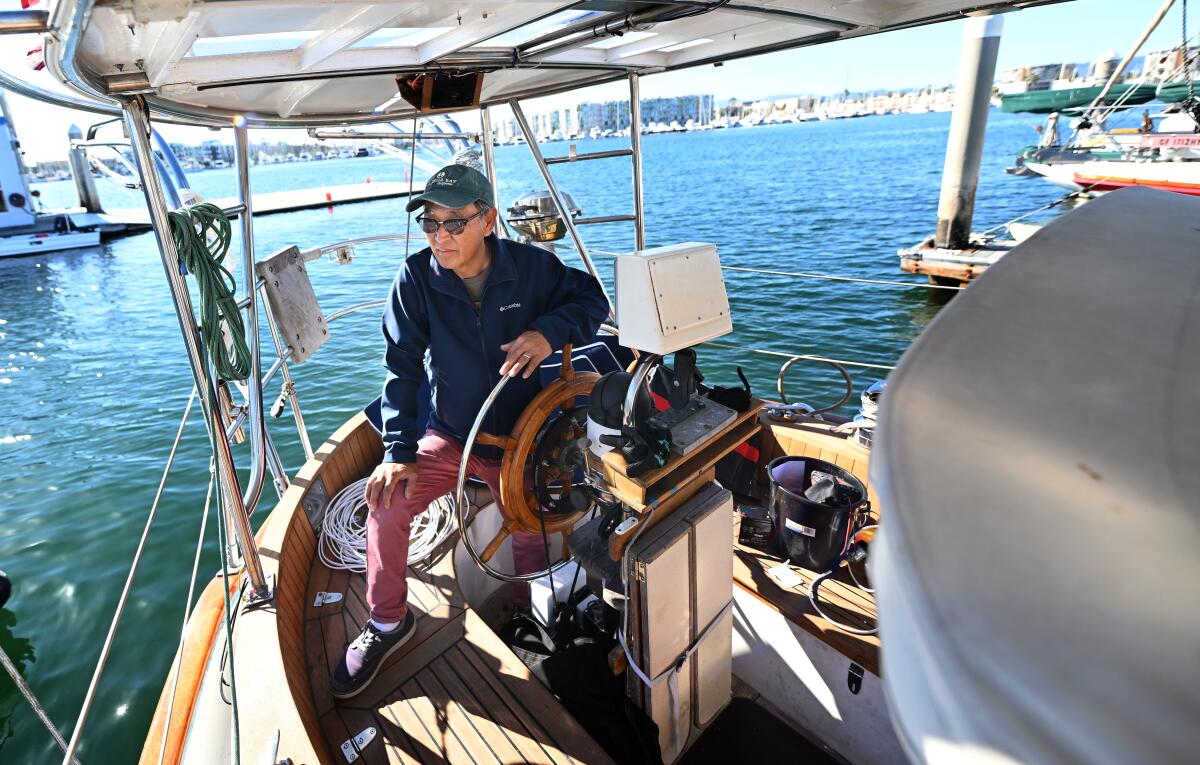
If everything goes right, Nam and his crew should make landfall in South Korea in mid-to-late May. Typhoons are among the many unknowns that could derail the voyage.
Donald Kang was the first Korean American to sail solo across the Pacific. He accomplished the feat in 1990 while a student at UCLA.
“Five hours into my sail out of San Pedro, I had my first impression of the Pacific Ocean: It’s crazy,” Kang wrote in his book, “Yes, I’m Crazy for the Ocean.”
The first day, Kang wrote, he vomited out his guts as he drifted in fierce winds. He had to take shelter on Catalina Island.
Weeks into his trip, his water tank and gas range broke, forcing him to rely on rainwater. He dodged everything from typhoons to container ships.
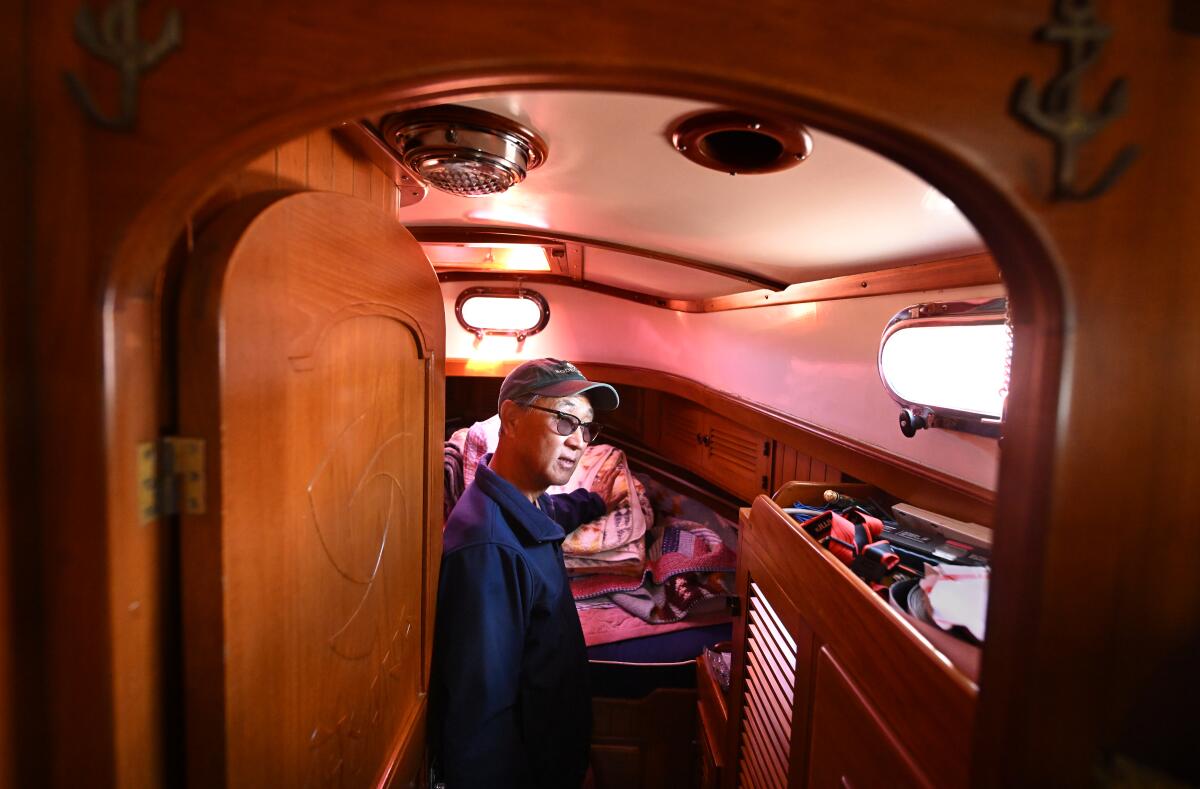
“You need to plan everything out,” said Kang, who recently met with Nam and his crew of three other sailors. “You need to always be mindful of things that might break, things that might go wrong.”
Nam’s wife, Stella Kim, sometimes wonders why she greenlit the trip.
“I don’t know if it’s good that I gave him ‘permission,’” Kim said with a laugh. “But I don’t want to have scary thoughts. I leave it all up to God ... I’m planning a 100-day prayer.”
Nam has racked up thousands of hours on the open water, including a solo trip up the Pacific coast to Seattle.
Two of Nam’s crew members are Korean American — Joseph Chang is an Iraq War veteran and Do Yoo a seasoned sailor.
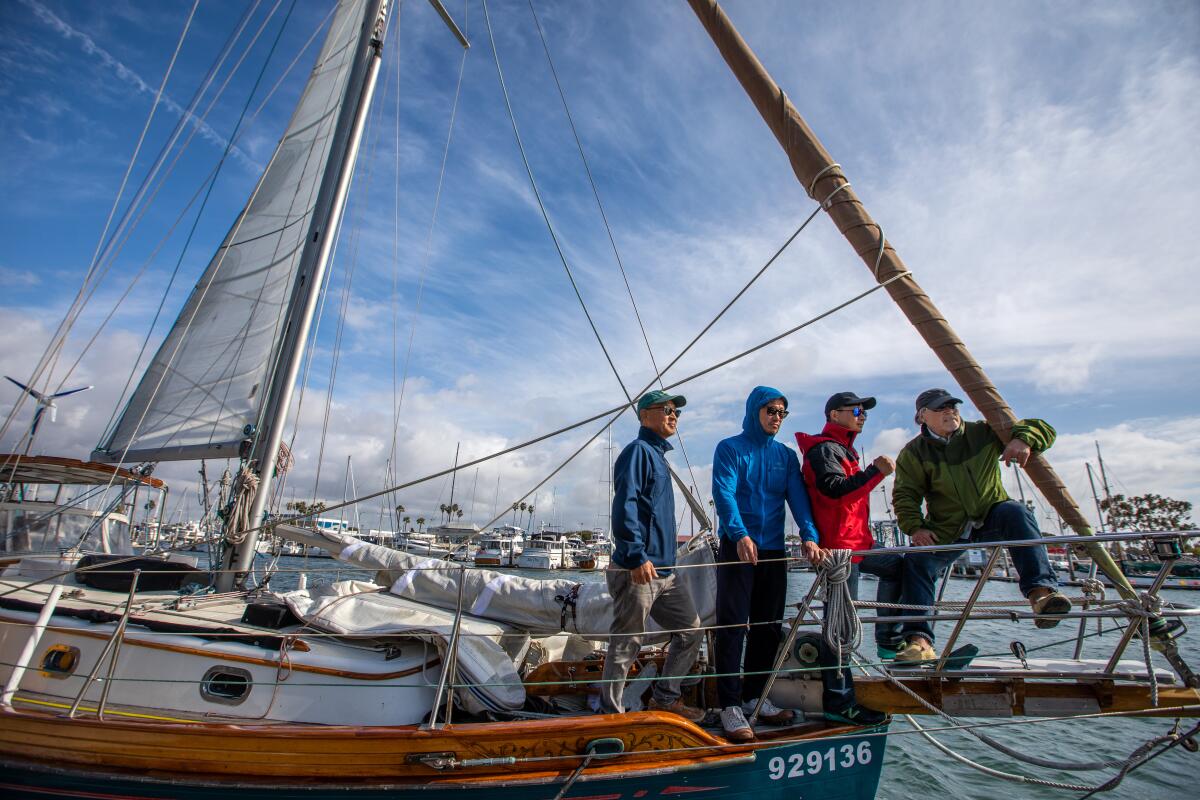
The third, Sang Hee Park, flew in from Korea with no sailing experience, connecting with Nam through a friend of a friend.
Park, 54, has been staying on the Ignatella for a month while learning the basics of sailing from Nam.
As he prepares to retire from the real estate industry, Park is trying to figure out what to do next.
“It’s an unforgettable experience,” he said. “I hope the next two, three months will refresh my life.”
Nam has spent $50,000 fixing up the Ignatella and wishes he had tens of thousands more for new electric wiring, water pumps, a shelter against harsh weather and many other enhancements. He still needs to find a crew member to replace Chang on the Hawaii-to-Korea leg.
Nam, who has led community sailing groups and taught sailing to many, hopes his trip can promote the pursuit to Korean Americans.
His ambitious voyage has struck a chord among Korean immigrants who didn’t dream big for themselves as they worked long hours to make it in the U.S.
The Korea Times, which is sponsoring Nam’s trip, refused to disclose a dollar amount while noting it has published several stories promoting the journey. The Korean consulate in Los Angeles has gifted a South Korean flag to display atop the boat. Others have donated food and supplies, including GoPro cameras.
At a dock party last month, Nam’s supporters ate fish cakes and posed for group photos.
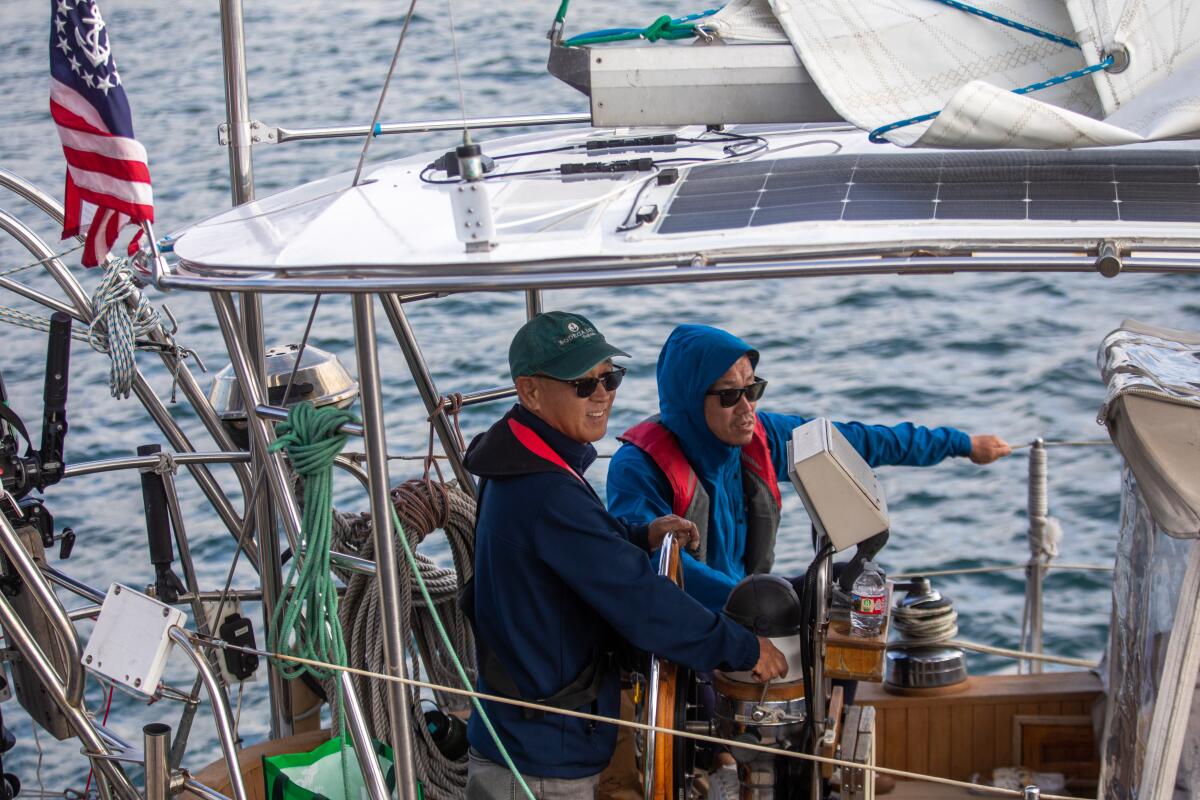
“I’ve lived in the U.S. for 40 years, and I’ve only looked forward,” said Martin Kwak, a 62-year-old retiree in Koreatown who has led a fundraising effort for Nam’s trip — about $15,000, including, almost $5,000 from a GoFundMe. “It’s great to see someone our age who is doing something and living life in the way they want.”
Wha Young Chang, a 63-year-old dog trainer and retired Korean-language TV anchor, said he told Nam, a longtime friend, not to go.
Why do this when you could die? Chang asked.
Chang was struck by Nam’s reply: “As people age, their dreams fade. But I want my dream to come true.”
As he made his final preparations, Nam was already thinking about his next sea voyage — Korea to L.A., through Alaska.

On Saturday, Nam and his crew displayed a South Korean flag, then pulled on the ropes and raised the sail. A version of the American flag, used by licensed yachts, waved at the stern as they headed for the horizon.
More to Read
Sign up for Essential California
The most important California stories and recommendations in your inbox every morning.
You may occasionally receive promotional content from the Los Angeles Times.



